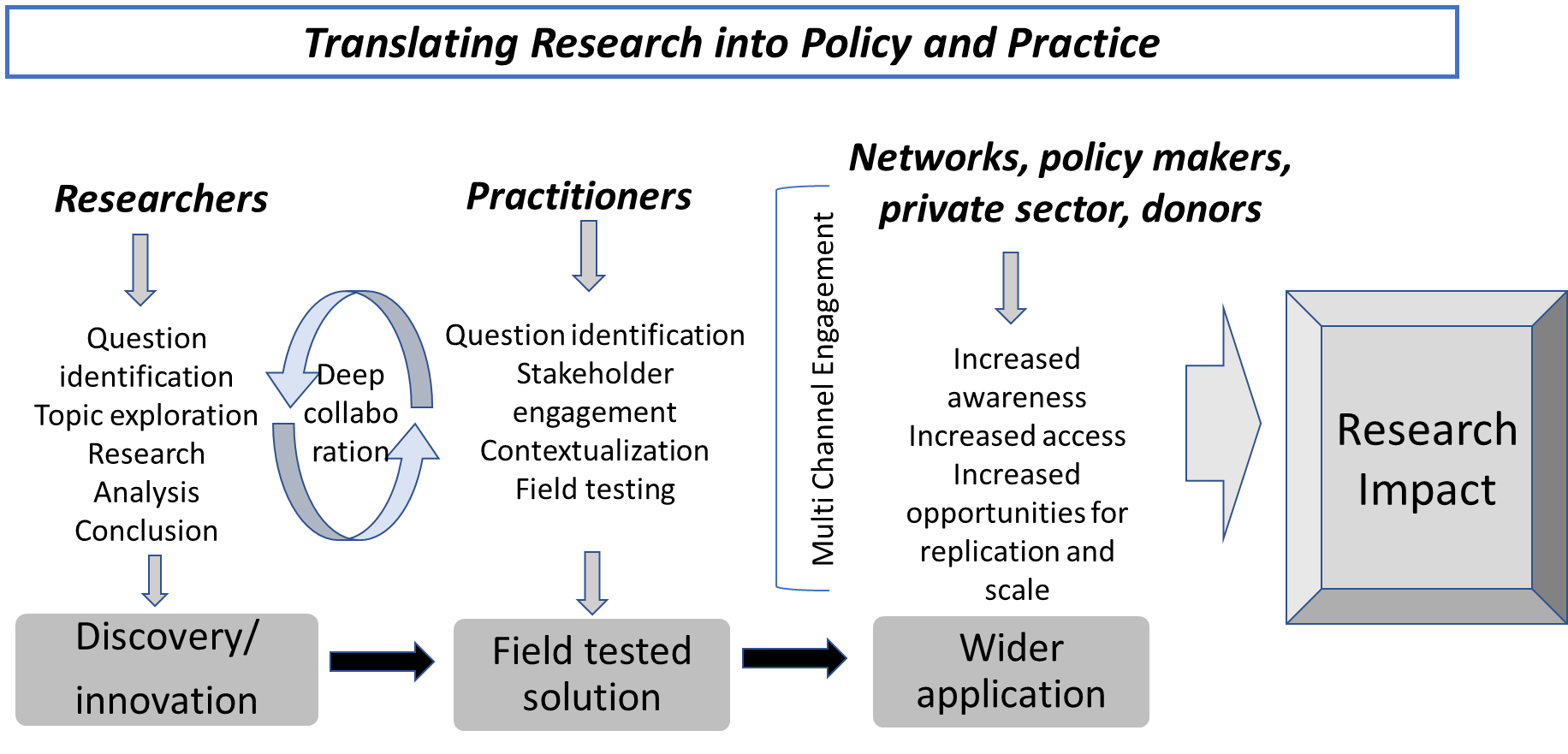What is Research Translation?
While research translation can be described in several ways, here are two succinct definitions:
- Adaptation of research results into contexts and idioms, and various forms and formats, that are easily understandable by intended users and beneficiaries at the field-level.
- Translated for use means a research product, or set of research results, has been tailored for non-technical audiences with the intent of facilitating the application of the research. (USAID definition) Examples include: policy briefs, policy recommendations, editorials, media, infographics and blogs.
Note, however, that research translation is much more than just adapting results – it is also an iterative, collaborative process to ensure that research is not only rendered comprehensible to people at the field-level, but that from the very beginning it is designed to be responsive to their specific needs.
This process is encapsulated in the following diagram:

Research Translation in LASER PULSE: a Core Component
Central to LASER PULSE’s success will be its ability to bridge researchers, thought leaders, innovators, and scientists with those on the ground doing the work – including NGO, civil society, private sector and government actors – around the same development targets and to strengthen the capacity of practitioners to demystify, navigate, connect and engage with the world of research and vice versa.
By mapping stakeholders with interests in an idea/topic/problem, LASER can help implementers identify potential counterparts in the research world, understand their approach and interests, connect with these academic stakeholders and potential partners, and engage with new partners in meaningful ways. In addition, LASER can help academics understand the world of development practitioners, know who is working on what and connect and engage leaders in the field with the research, innovation, and emerging ideas that could improve their work.
In addition, LASER PULSE seeks not just to increase research capacity, output and translation, but also research dissemination and use. Innovation and successful research results are important, but inadequate if they do not result in influence and impact in policy and practice. As such, LASER PULSE’s works to increase dissemination and use of translated research solutions and policies.
